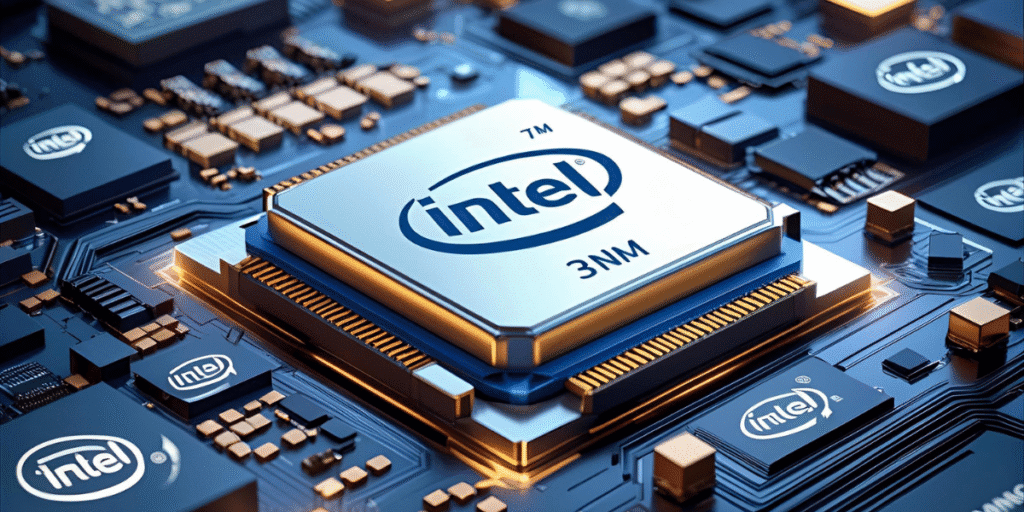Intel’s latest breakthrough in semiconductor technology, the unveiling of its 3nm chips, promises to reshape the future of computing with unparalleled performance and energy efficiency. As the tech giant pushes forward in the realm of high-performance chips, this 3nm innovation represents a major step up from the previous 5nm generation and is set to influence a wide range of industries, from consumer devices to data centers.
What Makes Intel’s 3nm Chips Stand Out?
Intel’s new 3nm chips are designed to deliver significant advancements in processing power, energy consumption, and form factor efficiency. These improvements enable the chips to perform faster, while using less power, which will ultimately lead to longer battery life in devices and less heat generation, making them ideal for both portable devices and high-demand environments like data centers.
Key Benefits of Intel’s 3nm Chips:
- Faster Data Processing: The reduced size of transistors allows for quicker data transmission, meaning tasks such as gaming, video rendering, and data analysis will see substantial speed increases.
- Energy Efficiency: With less power required to drive the smaller transistors, these chips are expected to lower energy consumption, which will be particularly beneficial for energy-intensive industries like AI and cloud computing.
- Compact Form Factor: These smaller chips take up less physical space, enabling smaller and sleeker devices without sacrificing performance. This is particularly important in mobile computing and smart devices.
Impact on Consumer Devices
The 3nm technology promises to revolutionize the consumer electronics market, particularly in laptops, desktops, and smartphones. As the demand for high-speed processing and longer battery life increases, Intel’s 3nm chips could become a staple in next-generation devices.
Laptops and Desktops:
By offering enhanced processing power with lower power consumption, Intel’s 3nm chips will be ideal for ultra-portable laptops, providing users with faster performance without worrying about draining their battery quickly. This leap in chip technology could redefine what’s possible in the world of mobile computing.
Smartphones:
With the increasing demand for multi-tasking capabilities and smooth operation of demanding applications like 5G, gaming, and AR/VR, smartphones powered by Intel’s 3nm chips will experience higher efficiency and longer battery life.
A Game-Changer for Artificial Intelligence and Autonomous Systems
Beyond consumer devices, the 3nm chips are poised to have a transformative effect on industries that rely on intensive computing tasks such as artificial intelligence (AI), machine learning (ML), and autonomous systems. These fields require extremely fast data processing capabilities while minimizing power usage. Intel’s 3nm chips are expected to excel in environments where these factors are critical, enabling faster, smarter, and more energy-efficient AI and ML solutions.
For autonomous vehicles, in particular, the power and efficiency of Intel’s chips will enhance decision-making algorithms, allowing self-driving cars to process data more efficiently in real-time, without overloading power systems or generating excess heat.
Boosting Cloud Computing and Data Centers
Another key application for Intel’s 3nm chips will be in cloud computing and data centers. These sectors are constantly looking for ways to handle larger data workloads while improving power efficiency. The new chips promise to deliver both, offering the potential for reduced operational costs in managing massive server farms and cloud infrastructure.
Intel’s focus on improving the performance-per-watt ratio could also reduce the carbon footprint of large-scale data centers, addressing a growing concern in the tech industry about sustainability and energy consumption.
Revolutionizing the Gaming Industry
Intel’s 3nm chips are also expected to drive a new era in gaming, particularly for high-end gaming PCs and consoles. With the growing popularity of virtual reality (VR), ray tracing, and ultra-high-definition gaming, Intel’s chips can provide the raw power needed to run these demanding applications with speed and efficiency. Gamers can look forward to better frame rates, smoother graphics, and faster load times.
Shaping the Future of Smart Devices and IoT
The smaller and more efficient nature of Intel’s 3nm chips makes them well-suited for the rapidly growing Internet of Things (IoT) market. From smart appliances to wearables, these chips could power the next generation of connected devices. The potential for long-lasting battery life coupled with enhanced processing speeds means that IoT devices could become more intelligent, responsive, and versatile.
Why Intel’s 3nm Chips Matter
Intel’s 3nm chips could set a new industry standard for computing performance, efficiency, and versatility. As the demand for faster, more efficient computing continues to rise across sectors, these chips will play a key role in shaping the next wave of technological innovation. Whether for everyday consumer devices or critical infrastructure in industries like AI and cloud computing, Intel’s 3nm technology stands to redefine the possibilities for high-performance computing.
Intel’s commitment to pushing the boundaries of chip design demonstrates its ongoing leadership in the semiconductor space. As we move toward a more connected, intelligent world, these 3nm chips are set to be a cornerstone of tomorrow’s computing solutions.
